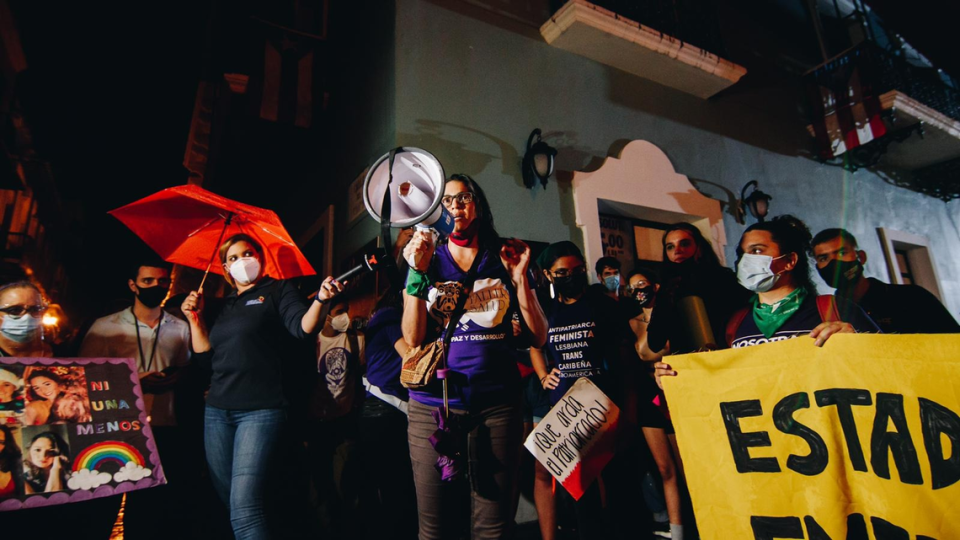Why Puerto Rico’s governor declared an emergency on violence against women
Puerto Rico Gov. Pedro Pierluisi declared a state of emergency Sunday over violence against women on the island, an unusual measure that appears to be the first of its kind in Latin America and the Caribbean.
Local activists have fought for the designation for years, noting an uptick in femicides and the lack of an effective police response. They hailed the order as an important step in improving government accountability.
But many are also cautious after years of disappointment on an island that has struggled to provide residents with even basic necessities like electricity in the aftermath of devastating natural disasters. And observers note that success will hinge not just on policy but a larger cultural shift.
“As long as you have such high levels of tolerance for gender-based violence, even the best legislation is not going to be perfect, because it is not going to be enforced,” said Amalia Alarcón, a leader with Plan International, a humanitarian organization that advocates for improving the lives of girls.
Here is everything you need to know about the emergency declaration:
Why was an emergency declared?
Puerto Rico has a high rate of femicides, similar to those of the Dominican Republic and Perú, a 2019 study from Kilómetro Cero and Proyecto Matria, two island-based rights groups, found. At least one woman is killed every seven days, the report states.
In 2020, Puerto Rico had 60 femicides, a 62% increase in such killings from the year before, according to a local watchdog group, the Observatory for Gender Equity. Of the 60, 17 occurred over a four-week period between September and October.
Anti-violence organizations have marched in the streets since 2018 in support of such a declaration, accusing the government of negligence in addressing the violence.

Declaring a state of emergency was one of Pierluisi’s campaign promises.
What does the order do?
The executive order aims to reduce and prevent violence against women and girls through policy, education, programs, and technology.
Among the measure’s key components: Launching a mobile app to help victims report aggressors and ask for help; appointing a new official who will make sure the measure is put in place; starting a program to check in with women who file for a restraining order; and a media campaign to educate the public.
The order also calls for boosting professional opportunities for women, with the belief that improving financial independence can help reduce exposure to violence.
What do women’s rights groups think?
Activist groups in Puerto Rico are celebrating the governor’s decision to declare a state of emergency over gender violence, but say they will be keeping a close eye on implementation after years of disappointment.
“This true recognition of how urgent it is to address the problem is news that we receive with great enthusiasm,” said Vilma González, executive director of Coordinadora Paz para las Mujeres, a coalition of over 30 anti-violence groups.
Amarilis Pagán, executive Director for Proyecto Matria, an organization focused on helping Puerto Rican women advance economically, is hopeful the order will bring change.
“One of the great problems that the government has in managing violence against women is that there is no supervision,” she said. “There is no evaluation of the quality of the service or of how the laws are being implemented.”
Among the most important points of the order, Pagán said: It recognized the state’s responsibility.
“It seems that we are finally going to be able to address the issue of violence against women with the three parties that should always have been actively involved—government, organizations, and society,” she said. “Until now the government had been oblivious, it had removed itself from the problem, from the work it had to do. Who was carrying the burden were organizations and civil society itself.”
Still, Pagán, along with other women’s rights leaders said there were recommendations that had been left out of the executive order. Among those: Improving government statistics on femicides.
“Gender violence is built on the foundations of a patriarchy that has taken hundreds of years, right?” said González. “We know that it is not something that is going to be solved overnight, nor that the executive order is going to solve it overnight. But yes, it seems to me that it is an important step.”
What happens next?
The advisory committee will put together an action plan and publish its first report within 45 days. After that, it will track the order’s implementation with monthly progress memos and recommendations.
Pierluisi, on his end, will propose a preliminary budget to fund the executive order. He will present it to the Financial Oversight and Management Board for Puerto Rico, which oversees the island’s finances. He did not give specific details on how much the executive would cost to implement at a press conference Monday.
The island’s Secretary of Education said some classes already have a gender and identity component, but that they are working to further incorporate it in schooling. .
You can read the order here:
Oe Violencia Genero Pierluisi by Miami Herald on Scribd
